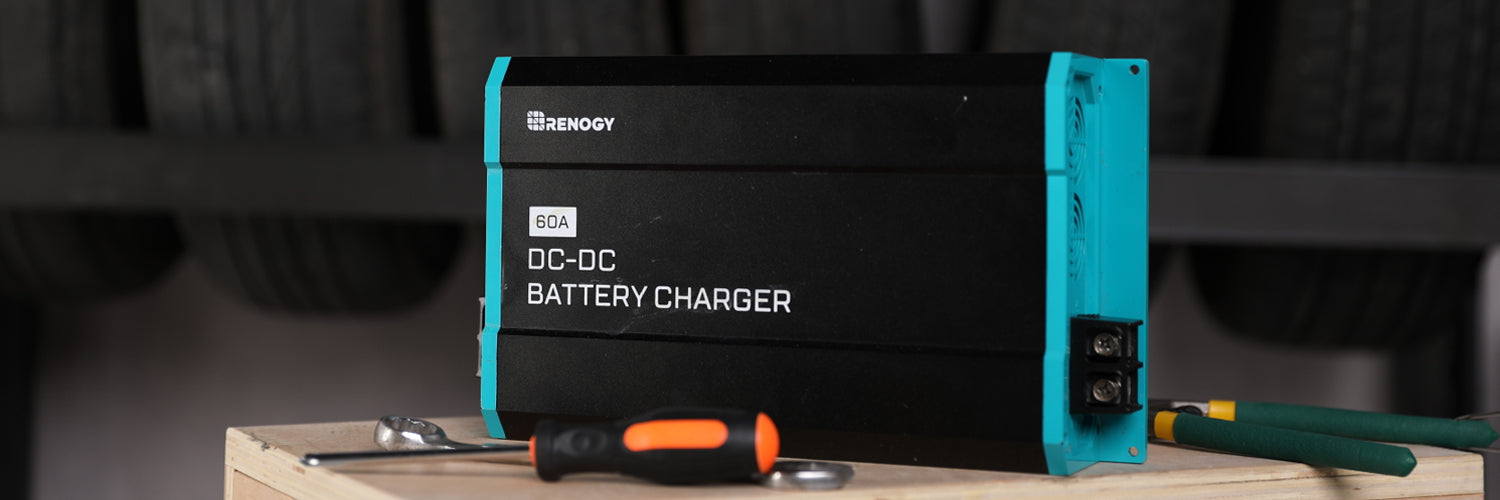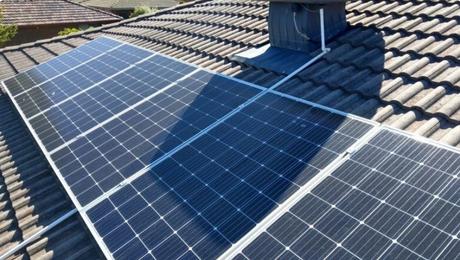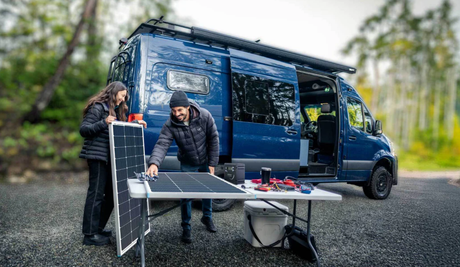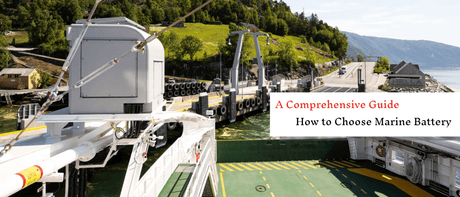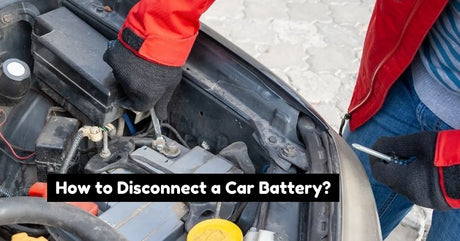Do I Need a DC to DC Battery Charger?
Your vehicle’s electrical system is complex, even without a DC to DC battery charger. And when it comes to your car’s starter battery, you probably don’t spend a lot of time thinking about whether it’s going to have enough charge. That’s thanks to your car’s alternator, which charges the battery while the engine is running.
But for drivers who have additional power needs, modern smart alternators don’t provide the power to charge secondary batteries, like those used to power a recreational vehicle (RV) or a converted van. Older alternators would continue to produce energy once the starter battery was fully charged, and that extra power could charge additional batteries. Smart alternators, however, stop producing excess electricity, which can slow or even stop the charging process on secondary batteries.
The solution is a DC to DC battery charger—a relatively simple, easy-to-install device that can help you charge your secondary “house” batteries faster and more efficiently. But how exactly do these DC to DC battery chargers work? Let’s take a deeper look at how you can make the best use of your DC to DC battery charger, including how you can integrate them into your solar panel setup.
What Is a DC to DC Battery Charger?
Technically speaking, a DC to DC battery charger is any device that supplies power to your battery without having to use a converter to transform alternating current (AC) to direct current (DC).
These chargers come in many forms. For instance, although portable car battery chargers are usually charged themselves from AC, usually from a wall outlet, they use DC to charge the battery in your car. Once the starter battery has enough power to start your vehicle, the alternator takes over, generating electricity and charging the starter battery the rest of the way.
The same principle is true for many wall-mounted electric vehicle (EV) chargers. While you can find both AC and DC chargers, the DC models tend to charge vehicle batteries much faster since you don’t lose energy during the conversion process.
What Is an On-Board DC to DC Battery Charger?
For our purposes, though, we’re going to focus on onboard DC to DC battery chargers. As you might have guessed, these chargers are installed onboard your vehicle, and they work primarily while your car is running.
Before smart alternators became standard, extra batteries were charged from the alternator using battery isolators, which would divert excess electrical charge from the alternator to charge your secondary battery. However, the advent of better electrical generators means there’s a minimal extra charge, which can make it nearly impossible to get your battery fully charged.
Onboard DC to DC battery chargers are much more efficient at battery management. These DC to DC chargers work for all dual battery systems, including lead-acid and lithium batteries. As technology continues to advance, many isolator systems will become entirely obsolete, making DC to DC battery chargers your only solution to charging your house batteries.
With a DC to DC battery charger, you can ensure that your house batteries will charge nearly 100%. That will not only lengthen your battery life but also help prolong the life of your batteries, which tend to last longer when fully charged before being drawn on.
Whether you’re going for a camping trip or you’re transitioning off the grid for good, you should consider investing in a quality DC to DC battery charger. They will provide you with the power you need to keep your home running, regardless of whether you’re drawing solar power.
Installing a DC to DC battery charger in your vehicle is very easy. You simply run positive and negative cables from one end to the vehicle battery and from the other end to the house battery. There’s also a lead connecting the charger to the ignition, which signals the charger to power on.
The one thing you need to remember is to install fuses or breakers in the system. While fuses will work fine, a breaker panel provides you more control over the power flow and means you can flip a tripped circuit without having to crawl around trying to change a fuse.
How Do DC Chargers Work with Solar Panels?
DC to DC battery chargers are easy to integrate into your solar installation. Many companies offer combination alternator-based chargers and charge controllers, which you’ll need anyway for your solar array. Not only does this save you money over purchasing two different systems, but you’ll also save on space, making it easy to find room to install the necessary equipment.
Once installed, the charger will adapt automatically based on how much energy your solar panels are generating. The more power your panels generate, the less your charger is absorbing from the alternator.
With a combination charger/controller, you may find that you don’t need to rely on your solar power all that much as you’re driving. If you spend a lot of time on the road, you’ll probably generate more than enough electricity to charge your battery fully. Plus, the built-in management system will keep your solar panels from over-generating power.
This option is an excellent backup for periods when your solar panel isn’t generating electricity, such as on cloudy days or during the night. However, with the dual-input system, you don’t have to drive or run your engine to charge your batteries, giving you exceptional flexibility. You can install permanent panels or simply rely on folding solar panels , which you can place once you’ve stopped.
Hooking up a DC to DC Battery Charger to Your Solar Installation
Installing these dual input chargers is slightly more complicated than the single input models, but the process is still relatively straightforward. Instead of a negative and positive connection for two batteries, these chargers have positive connections for the alternator, the house battery, and the solar panels. A single negative terminal feeds to all three connections.
In addition, there is a data port, a temperature sensor, a voltage sensor, and a connection to the ignition system, which tells the charger when the alternator is functioning. All of these connections help you ensure that your house batteries receive the correct charging without being driven with too much power at any one time, protecting your entire system.
The Function and Application of a 12V DC to DC Charger
It is possible to find DC to DC battery chargers for both 12V and 24V systems. The difference is generally the size of the vehicle. Large trucks and boats tend to have 24V systems since they have higher power requirements and tend to lose more power over the course of their long cable runs.
For the most part, though, you’re much more likely to run into 12V battery systems, which power cars, small trucks, and RVs. The chargers in these systems are intended to generate the power you’ll need to run the electrical system in your living quarters. That includes powering lights, appliances like refrigerators and water heaters, and other electronic devices.
There are also several different sizes of chargers available. Remember that it’s very, very important to choose the right size for your battery. Most manufacturers will specify a recommended charge current (in amps) as well as a maximum.
The recommended charge is usually a range of amperages, and the closer you get to the higher end, the faster your battery will charge. In general, lithium batteries are typically able to handle a higher charging rate.
Get Power When You Need It
Many people who wish to get off the grid decide against it for fear they won’t have enough power to meet their individual daily needs, let alone their family’s needs. That is especially true of those transitioning to mobile living, either in an RV or a converted van, since they may end up in relatively remote locations, far from shore power.
Whether you’re on a camping trip or you’re disconnecting from the grid entirely, a DC to DC charger is an integral part of getting the most out of your electrical system. Solar panels can help, but they can depend on factors like the weather. For example, poor or unideal weather conditions may diminish the amount of power they generate on a given day.
With a DC to DC battery charger, you can make sure that you’ll have enough power to keep your home running even when the sun isn’t shining. Simply driving will charge your batteries with an onboard charger, making the most of your vehicle’s alternator system. While smart alternators are more efficient and don’t constantly run once the starter battery is charged, they can provide an efficient means of assessing your backup batteries.
When you integrate a DC to DC charger into your solar installation, whether fixed or portable, you enhance your power generating capabilities even further. That flexibility can go a long way to ensuring that your food stays cold (or warms up), your showers remain hot, and the lights will come on when you need them.

